WNBA Sunday Recap: Storm Overwhelm Liberty, Aces Extend Sun’s Losing Streak to 10
Storm Surge Past Liberty Behind Gabby Williams’ All-Round Brilliance The Seattle Storm (12-7) stunned the New York Liberty (15-5) with a strong second-half rally, sealing a 79-70 victory on their home court. The game was defined by a dominant third quarter from Seattle, during which they outscored New York 22-6 — turning a three-point halftime deficit into a double-digit lead. Balanced Offense Leads the Way Gabby Williams led the Storm with an efficient and dynamic performance. She scored 16 points on 7-of-13 shooting and contributed across the board with seven rebounds, five assists, and three steals. Her aggressive play in the third quarter sparked the turnaround, where she notched seven points and made key defensive plays that disrupted the Liberty’s rhythm. “She set the tone on both ends,” said Storm coach Noelle Quinn. “Her energy changed the game, especially coming out of halftime.” The Storm’s balanced scoring attack proved too much for New York to contain. Jewell Loyd added 14 points, while Ezi Magbegor and Jordan Horston chipped in 11 points each. Seattle also got valuable contributions off the bench, helping them maintain momentum as they pulled away late. Liberty Start Strong, Fade After Halftime The Liberty held a 38-35 lead at the break, driven by a solid first half from Breanna Stewart and Sabrina Ionescu. Stewart finished with a team-high 19 points and nine rebounds, while Ionescu added 15 points and six assists. However, New York’s offense went cold in the third quarter, committing six turnovers and hitting just 2-of-12 from the field. Coach Sandy Brondello lamented the lack of execution after halftime: “We just didn’t play with the same discipline. Seattle made adjustments, and we didn’t respond. That third quarter was the difference.” Despite a late surge in the fourth quarter that brought them within six points, New York could never recover the lead. Missed free throws and poor shot selection down the stretch sealed their fate. Storm’s Defense Shuts the Door Seattle’s second-half performance was anchored by their defense. The Storm forced 16 turnovers for the game and converted many into fast-break opportunities. Their defensive effort in the third quarter, in particular, was smothering — holding the Liberty to just six points, their lowest in any quarter this season. The Storm improved to 12-7 with the win and continue to build momentum as a dark horse contender in the league. They’ve now won 5 of their last 6 games and look to continue their strong play heading into the mid-season stretch. Aces Dominate as Sun’s Slide Continues Meanwhile, in another crucial Sunday showdown, the defending champion Las Vegas Aces (13-6) handled business on the road, defeating the Connecticut Sun (13-10) and extending their losing streak to 10 games. Plum and Wilson Lead the Charge Kelsey Plum and A’ja Wilson starred for Las Vegas. Plum dropped 24 points and dished out five assists, while Wilson added a double-double with 21 points and 12 rebounds. Their inside-outside combination was too much for Connecticut, especially in the second half when the Aces pulled away. “Our chemistry is clicking again,” Plum said. “We’re playing for each other, and our bench has been great giving us energy.” Sun Struggling to Find Answers Connecticut’s season has taken a sharp downturn. Despite an excellent start to the season, the team now finds itself in a slump, unable to finish games. DeWanna Bonner scored 18 points, but the Sun were out-rebounded and out-hustled, particularly in the final minutes. Coach Stephanie White emphasized the need for urgency: “This losing streak isn’t who we are. We need to get back to playing physical, smart basketball.”
Grand Chess Tour 2025: D Gukesh Shines Bright in Rapid Segment with Victory Over Wesley So
Gukesh Dommaraju Tops the Table with Commanding Win D Gukesh, the reigning World Champion in classical chess, continues to cement his legacy as a rising superstar in all formats of the game. On Friday, during the final round of the rapid section of the Grand Chess Tour’s SuperUnited Croatia Rapid & Blitz 2025 tournament in Zagreb, the young Indian prodigy delivered a resounding victory over American Grandmaster Wesley So. This dominant win allowed Gukesh to surge ahead at the top of the leaderboard, underlining his increasing dominance in the faster formats of chess. A Star Performance in the Rapid Format Despite being primarily celebrated for his accomplishments in classical chess, Gukesh has steadily built a formidable reputation in rapid and blitz events as well. In the ninth and final round of the rapid portion of the SuperUnited tournament, Gukesh showcased sharp preparation and clinical precision to defeat Wesley So, a veteran of elite rapid play. The win took Gukesh’s total to 14 points from 9 rounds, putting him comfortably at the top of the standings. His performance was not just about consistency, but sheer dominance—often taking control of the game from the opening and converting even slight advantages with maturity well beyond his years. The Chase Behind: Duda and Carlsen Trail Polish Grandmaster Jan-Krzysztof Duda is currently holding second place with 11 points, having delivered a solid performance through the rapid rounds. Duda, known for his sharp tactical play, remains a strong contender as the blitz rounds approach. Meanwhile, former World Champion and global chess icon Magnus Carlsen is lurking close behind. Although he did not dominate the rapid section as he often does, his experience and flair for blitz chess make him a serious threat going into the next phase of the event. A Pivotal Win Against Wesley So Wesley So is known for his rock-solid style and rarely goes down without a fight. That makes Gukesh’s win even more impressive. Gukesh chose a dynamic line in the opening, putting immediate pressure on So’s position. Throughout the game, he maintained his advantage and demonstrated exceptional endgame technique to convert it into a full point. The result was a clear signal to the chess world that Gukesh is not just a classical chess phenomenon but a well-rounded player capable of toppling the best in any format. Youth Leading the Way At just 19 years old, Gukesh holds the distinction of being the youngest ever Classical World Chess Champion, having dethroned legends to reach the summit. His recent performances in rapid and blitz formats show that his game is evolving rapidly to meet the multifaceted demands of modern chess. His preparation, mental resilience, and speed of calculation have made him one of the most feared opponents in the world. With his victory over So, Gukesh not only increased his lead but also made a statement ahead of the blitz segment. Tournament Overview: SuperUnited Croatia Rapid & Blitz 2025 The SuperUnited Croatia Rapid & Blitz is one of the key stops on the Grand Chess Tour 2025, attracting top-tier global talent. Held in Zagreb, Croatia, the event features a mixed format of rapid and blitz games, testing a wide range of skills from long-term strategy to lightning-fast calculation. The tournament is structured with nine rapid rounds followed by eighteen blitz rounds, using the standard Grand Chess Tour scoring system—2 points for a win and 1 for a draw in rapid, and 1 point for a win, 0.5 for a draw in blitz. What’s Next: Blitz Segment Begins With the rapid section now concluded, all eyes are on the upcoming blitz rounds. While Gukesh enjoys a solid lead, the blitz format is known for its unpredictability. Players like Carlsen and So, both considered elite blitz specialists, will be looking to bounce back and close the gap. Gukesh, however, has been working tirelessly on improving his blitz prowess. His recent online performances and over-the-board blitz games suggest he is ready for the challenge. If he maintains the momentum from the rapid rounds, the young champion could very well walk away with the title. Gukesh’s Journey: From Prodigy to Powerhouse D Gukesh’s rise in the chess world has been nothing short of meteoric. Starting his journey as a child prodigy, he quickly climbed the ranks to become one of India’s brightest talents. His World Championship win earlier this year was a landmark moment not only for him but also for Indian chess as a whole. Now, with a dominant showing at the Grand Chess Tour event, Gukesh is building a new narrative—one where he is no longer just the young challenger, but a leader in the elite circuit, across formats. Final Thoughts The Grand Chess Tour 2025 is heating up, and Gukesh’s performance in the rapid section has already made it a tournament to remember. His blend of youthful energy, deep preparation, and strategic clarity is proving difficult for even the most experienced players to counter. As the blitz rounds commence, fans around the world will be watching closely. Can Gukesh hold on to his lead and secure another title on the international stage? If his rapid performance is any indication, the answer may very well be yes.
Sienna Betts and Team USA U19 Gear Up for FIBA Women’s World Cup Challenge
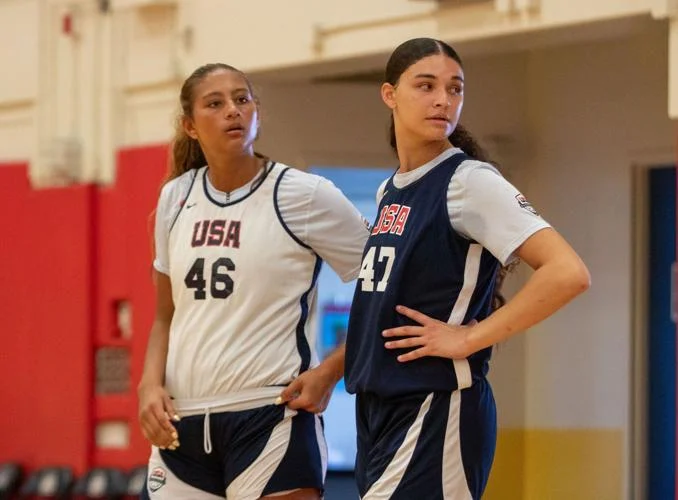
Preparation in Full Swing at Olympic Training Center As the final whistle echoed through the gym at the U.S. Olympic & Paralympic Training Center, the U19 Women’s National Team began wrapping up their intense practice session. But head coach Teri Moren wasn’t ready to let things slide just yet. A crucial mistake during a free throw box-out at the end of the session caught her eye—one that she couldn’t ignore. Instead of dismissing the team, Moren blew her whistle and asked the players to return. “There are no do-overs in games,” she reminded them, “but we can have those in practice. Those are the moments I have to steal.” It’s this detail-oriented mindset that’s guiding Team USA as they make final preparations for the 2025 FIBA U19 Women’s Basketball World Cup, set to take place from July 12 to 20 in Brno, Czechia. Leading the Way: Sienna Betts and a Talented Roster Among the standout players is Sienna Betts, a rising star and younger sister of USC’s All-American post player Lauren Betts. Sienna, known for her strength in the paint and high basketball IQ, is expected to play a critical role in the team’s World Cup campaign. This year’s U19 roster boasts a blend of talent, youth, and experience. Many of these players have already made waves in the high school and collegiate circuits and are now looking to make their mark on the international stage. With Betts anchoring the post, the team also features dynamic guards and versatile forwards, each bringing something unique to the court. Teri Moren Instills Discipline and Attention to Detail Coach Teri Moren, head coach of Indiana University’s women’s basketball team and now at the helm of the U19 squad, is laser-focused on discipline and fundamentals. Thursday’s practice was not just another drill session—it was the team’s final run-through before departure. Her decision to redo the final play reflects a deep commitment to excellence. “When you’re in the heat of the game, there’s no going back,” Moren explained. “So if we want to fix something, now is the time.” This approach emphasizes accountability and precision—two traits Moren believes will define the team’s identity in the World Cup. From Practice to the World Stage Team USA heads into the tournament as one of the favorites, thanks to a strong track record and deep bench. However, the competition is fierce, with top teams from Europe, Asia, and other parts of the world preparing just as rigorously. The U19 Women’s World Cup serves as a critical platform for identifying the next generation of international basketball stars. It’s also a test of adaptability, teamwork, and mental toughness. Playing overseas, adjusting to FIBA rules, and facing unfamiliar opponents—all in a high-pressure environment—demands maturity beyond years. That’s exactly what Moren and her coaching staff are striving to instill in their players. Player Development and Bonding Off the Court Beyond technical drills and tactical planning, the training camp in Colorado Springs also serves as a bonding experience. Players, many of whom are used to being the stars of their local teams, must learn to gel quickly, accept roles, and support one another. The team has participated in film sessions, team-building exercises, and workshops to reinforce unity and shared purpose. “We’ve got girls from all over the country,” Moren noted, “and we need them to come together as one unit. The chemistry we build off the court is just as important as what happens during the game.” Eyes on Gold, Mind on Growth While winning gold is always the goal for Team USA, coaches and staff are equally invested in the growth and development of the players. The World Cup represents an opportunity not only to compete for a title but also to learn and evolve under international pressure. Several players on this roster could very well end up starring for the senior national team in future Olympics. This tournament is a critical stepping stone—one that shapes future careers and prepares athletes for the global spotlight. What’s Next: The Road to Brno With final practices concluded and corrections made, Team USA is now en route to Brno, Czechia. There, they’ll begin their tournament run, facing group-stage opponents before moving into the knockout rounds. The coaching staff has scouted potential matchups, analyzed game film of other international teams, and prepared strategic adjustments. But ultimately, as Moren puts it, “It comes down to execution. All the preparation in the world doesn’t matter if we don’t perform in those 40 minutes.” Final Thoughts: A Team Built for the Moment Sienna Betts and the U19 Women’s National Team are more than ready for the challenge. With a committed coaching staff, a focused roster, and months of preparation behind them, they head to Brno not just to compete—but to represent the United States with pride, poise, and passion. From the crisp passes in practice to the hustle plays and film sessions, this team is fine-tuning every detail. Because in the end, there are no do-overs in a World Cup match.
Edgbaston Boundaries Shortened to Suit Bazball? Former England Pacer Steven Finn Sparks Controversy
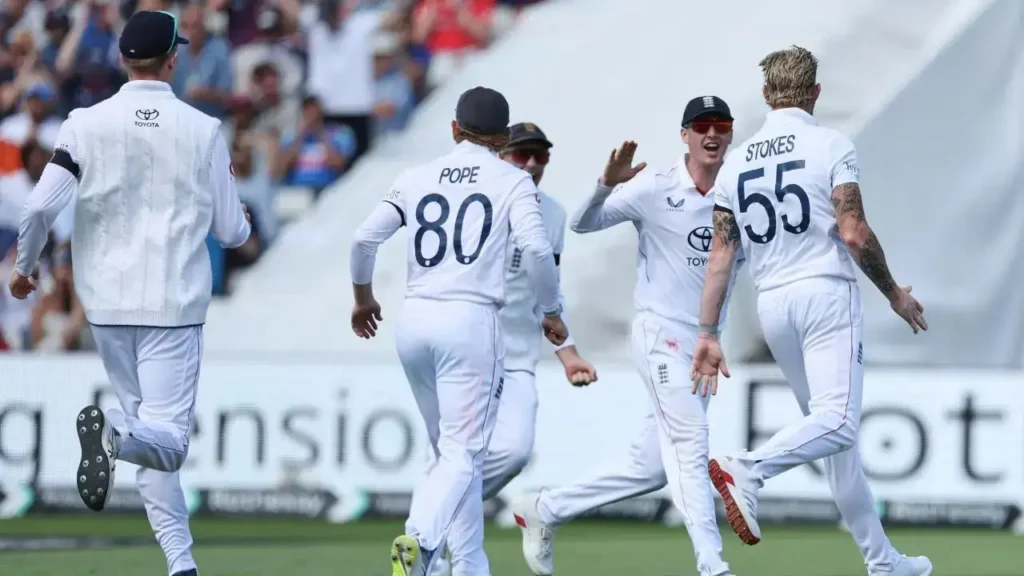
Allegations Stir Debate in the Cricket World Cricket fans were left stunned after former England fast bowler Steven Finn made a bold and controversial claim regarding the boundary dimensions at Edgbaston during the second Test between India and England. As India finished Day 1 on a dominant 310/5, largely propelled by an unbeaten 114 from captain Shubman Gill, Finn alleged that the boundaries had been deliberately shortened to favour England’s aggressive “Bazball” style of play. The remarks have triggered heated debates across the cricketing world, with many questioning whether such decisions compromise the fairness and integrity of the game. What Is Bazball? The term “Bazball” refers to England’s ultra-aggressive brand of Test cricket, popularised under the leadership of coach Brendon “Baz” McCullum and captain Ben Stokes. Since adopting this fearless approach, England has aimed to revolutionize Test batting by prioritizing run-scoring at a rapid pace, regardless of the situation or conditions. While the strategy has earned admiration for its entertainment value and occasional brilliance, critics have often questioned whether it is sustainable against quality bowling attacks or in more challenging conditions. Steven Finn’s Allegation: A “Deliberate” Move? Speaking on a cricket podcast, Steven Finn, who represented England in 36 Tests, did not hold back. “It looked very clear to me that the boundaries were brought in more than usual. That’s not standard at Edgbaston,” he said. “You can’t help but wonder if this was done to help England’s Bazball approach — it gives them more reward for their risks. But the irony is that India were the ones who fully capitalised.” Finn’s comments have sparked an uproar among fans and experts alike, especially considering the fact that it was India — not England — who cashed in on the smaller boundaries with a commanding batting display. India’s Dominance on Day 1 After being put into bat on a pitch that initially offered some movement, India got off to a strong start. Despite losing early wickets, the middle order, led by Shubman Gill, steadied the ship. Gill was at his fluent best, stroking the ball to all parts of the ground and reaching his century with effortless grace. He was ably supported by debutant Sarfaraz Khan and wicketkeeper Rishabh Pant, both of whom kept the scoreboard ticking. The shortened boundaries seemed to make strokeplay more rewarding, with several shots that might have fallen short of the rope at traditional boundary lengths sailing over or finding the fence with ease. ICC Rules on Boundary Dimensions The International Cricket Council (ICC) has regulations in place regarding the minimum and maximum permissible boundary sizes in international matches. According to the laws, boundaries must be between 65 and 90 yards (approximately 59.4 to 82.3 meters) from the centre of the pitch. While some variation is allowed due to stadium architecture, drastic changes for tactical purposes raise ethical concerns. If Finn’s allegations are true, the move could be seen as bending the spirit of the game, even if it stays within the legal framework. Reactions from Players and Experts While the England camp has not issued an official response, whispers around the cricketing community suggest that the issue may be raised behind closed doors. Indian team sources have reportedly expressed surprise at how “easy” it was to score boundaries at Edgbaston this time around. Former Indian cricketer Aakash Chopra tweeted, “Interesting observation by Steven Finn. But end of the day, both teams bat on the same pitch with the same boundaries. If England hoped to gain an advantage, it backfired today.” Michael Vaughan, former England captain, added a more measured take: “It’s not uncommon for boundary sizes to be adjusted, but transparency is key. If there was a specific reason to alter them, it should have been communicated.” Bazball Under Pressure The bigger question looming over this controversy is whether England’s Bazball strategy has become too reliant on favourable home conditions. Since its inception, Bazball has flourished in scenarios where pitches are flat and boundaries short. Against disciplined bowling and on challenging surfaces, the approach has yielded mixed results. If England indeed requested shorter boundaries to suit their style, it raises questions about the adaptability and confidence of the team. What Happens Next? Given the seriousness of the allegations, the England and Wales Cricket Board (ECB) may be compelled to release a statement clarifying the decision-making process behind the boundary dimensions at Edgbaston. The ICC, too, may seek a formal explanation if it suspects that competitive balance was intentionally manipulated. If proven, such actions could damage England’s credibility and undermine their much-celebrated Bazball philosophy, which was supposed to be about playing fearless, free cricket — not tweaking conditions to suit a particular strategy. Conclusion: A Day of Irony Ironically, the tactic — if intentional — may have hurt England more than it helped. India’s dominant performance on Day 1 has put the hosts under immense pressure, both on the field and off it. Steven Finn’s bombshell has added another layer of drama to what was already shaping up to be a thrilling Test series. As Day 2 approaches, all eyes will not only be on the pitch but also on the ongoing debate off it. Whether this incident fades away or becomes a major talking point in modern Test cricket, one thing is certain: the spirit of the game is once again under the microscope.
Guirassy Brace Sends Dortmund Past Monterrey to Set Up Real Madrid Clash in Club World Cup
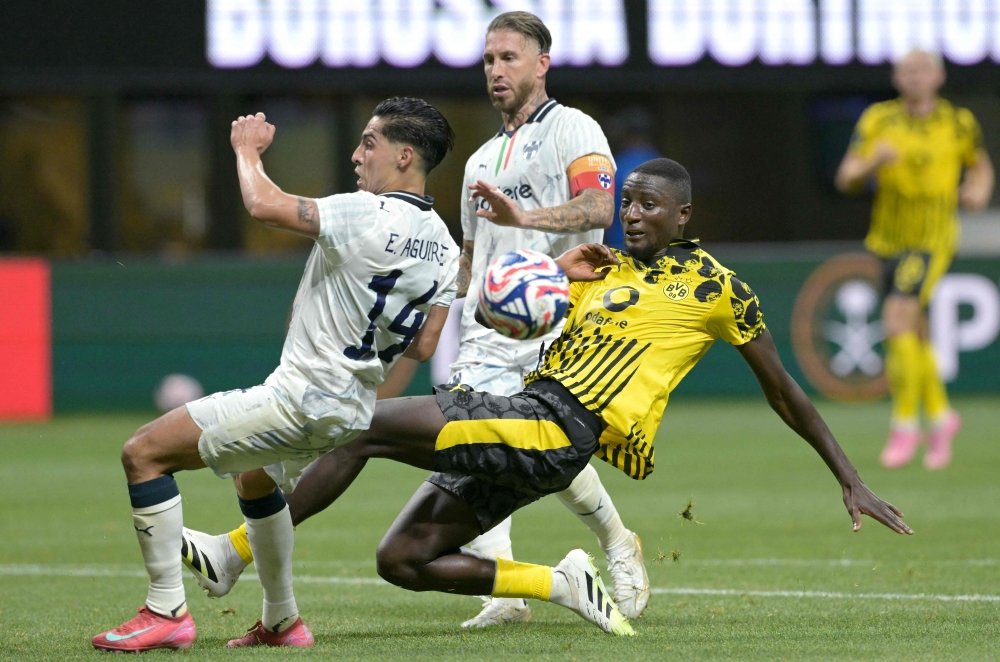
A Clash of Continents in the Club World Cup The FIFA Club World Cup continues to deliver high-stakes drama, with European giants Borussia Dortmund edging past Mexico’s Monterrey in a thrilling 2-1 encounter on Monday. Held at a neutral venue as part of the prestigious global tournament, the match saw Dortmund’s Serhou Guirassy take center stage with a clinical first-half brace. His performance ensured Dortmund’s progression to the quarter-finals, where they are now set to face reigning UEFA Champions League winners Real Madrid. First Half: Guirassy Strikes Early and Often Dortmund, coming off a strong domestic season in the Bundesliga, wasted little time imposing their dominance on the game. Serhou Guirassy, known for his explosive pace and intelligent positioning, opened the scoring in the 14th minute. A well-threaded through ball by Julian Brandt cut through Monterrey’s high defensive line, and Guirassy calmly slotted past the onrushing goalkeeper to make it 1-0. Just 12 minutes later, Guirassy doubled the lead. This time, it was a more individual effort. Picking up the ball near the edge of the box, he maneuvered past two defenders and fired a powerful low drive into the bottom corner. The Monterrey defense, including the experienced Sergio Ramos, had no answer for Guirassy’s movement and finishing. By the 30-minute mark, Dortmund looked in full control, combining quick passing, disciplined pressing, and flair from their front line. Monterrey, on the other hand, struggled to maintain possession and create meaningful chances during the first period. Monterrey Respond: Berterame Revives Hope Despite being 2-0 down, Monterrey came out in the second half with renewed urgency. Within minutes of the restart, German Berterame reignited their hopes. A mistake in the midfield allowed Monterrey to counter quickly, and Berterame took advantage of a brief lapse in Dortmund’s defensive structure. He latched onto a well-placed pass from Maximiliano Meza and calmly beat goalkeeper Gregor Kobel to reduce the deficit to 2-1. That goal changed the complexion of the match. Monterrey pushed higher up the pitch, putting Dortmund under significant pressure for the remainder of the second half. Ramos, despite his advancing years, led the Mexican side with passion and tenacity, rallying his teammates and surging forward during set pieces. Defensive Resolve: Dortmund Hold the Line As the game progressed, Dortmund began to focus more on protecting their narrow lead. Manager Edin Terzić made a series of tactical substitutions to reinforce the backline and solidify the midfield. Nico Schlotterbeck and Mats Hummels were instrumental in neutralizing Monterrey’s aerial threats and intercepting dangerous passes. Goalkeeper Gregor Kobel also played a crucial role, making several key saves in the final 20 minutes. His fingertip save from a curling free kick in the 78th minute prevented what looked to be a sure equalizer. Dortmund’s tactical discipline and composure under pressure helped them see out the match despite Monterrey’s energetic assault. Key Performances: Guirassy the Star, Ramos the Warrior Serhou Guirassy was undoubtedly the man of the match. His two goals were taken with supreme confidence, and his off-the-ball movement constantly unsettled Monterrey’s backline. With this brace, Guirassy now has 4 goals in the competition and looks set to play a vital role as Dortmund progresses further. On the other side, Sergio Ramos put in a commanding performance. While his side couldn’t pull off a comeback, Ramos’s leadership and defensive acumen were evident. The 38-year-old Spanish legend made crucial blocks, led counter-attacks, and motivated a young Monterrey side throughout the game. Looking Ahead: Real Madrid Await Dortmund With this victory, Borussia Dortmund have booked a spot in the Club World Cup quarter-finals, where a much-anticipated showdown with Real Madrid awaits. The match will not only be a test of Dortmund’s tactical depth but also a spectacle featuring some of Europe’s top talents. Facing Real Madrid, the most decorated club in European football history, will be no small feat. Dortmund will need to be at their absolute best, especially defensively, to contain the likes of Vinícius Júnior, Jude Bellingham, and Rodrygo. However, if Guirassy can maintain his red-hot form, Dortmund will have a potent weapon to challenge the Spanish titans. Conclusion: Dortmund’s Global Ambitions Take Shape Monday’s win against Monterrey marked an important step for Borussia Dortmund in their Club World Cup journey. The match served as a reminder of Dortmund’s ability to balance attacking flair with defensive grit. With Guirassy leading the line and a well-drilled squad behind him, they have proven that they belong among the world’s elite clubs. Now, all eyes turn to the blockbuster quarter-final matchup: Dortmund vs Real Madrid—a clash of legacy, talent, and ambition on football’s global stage.
Carlos Alcaraz Overcomes Fabio Fognini in Thrilling Five-Set Wimbledon Opener
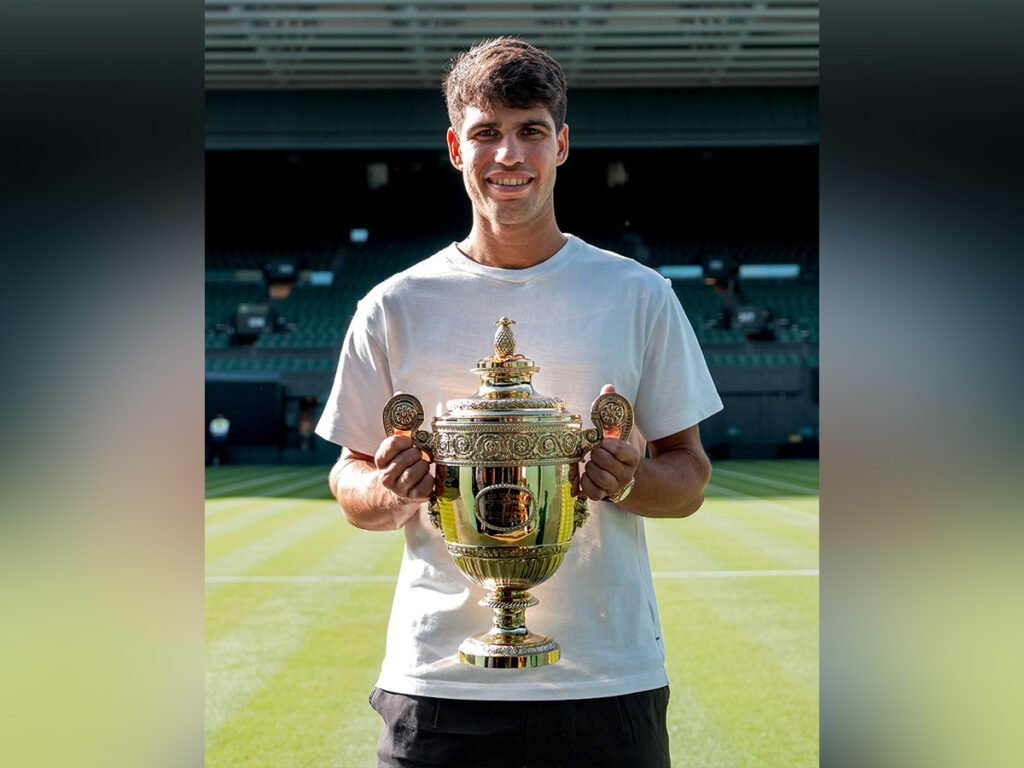
A Marathon Match on Centre Court Wimbledon 2025 kicked off with an electrifying contest as defending champion Carlos Alcaraz survived a massive scare from veteran Fabio Fognini in a gripping five-set duel. The 22-year-old Spaniard, who has emerged as one of tennis’ brightest stars in recent years, took 4 hours and 30 minutes to secure a dramatic comeback win over the seasoned Italian. Despite being heavily favored going into the match, Alcaraz found himself tested to the limits by Fognini, who, at 38, delivered a vintage performance filled with flair, grit, and emotion. This first-round clash became an instant classic at Centre Court, setting the tone for what promises to be an unpredictable fortnight at the All England Club. Fognini’s Swan Song Begins with Fire Fabio Fognini, known for his flamboyant style and unpredictable temperament, entered Wimbledon knowing this could be his final appearance at the iconic tournament. With retirement looming at the end of this season, the Italian played with a nothing-to-lose attitude, pushing the reigning champion to his physical and mental boundaries. Fognini took advantage of Alcaraz’s slow start, dominating early rallies with clever angles, drop shots, and aggressive net play. He captured the first set and followed it up with another strong performance in the second, shocking the crowd and leading two sets to none. Alcaraz Shows Champion’s Grit Trailing by two sets, Alcaraz showed exactly why he is a five-time Grand Slam champion and a two-time defending Wimbledon titleholder. The young Spaniard, who recently added the French Open title to his trophy cabinet, began to find his rhythm in the third set. Displaying his signature explosive forehands and never-say-die attitude, Alcaraz clawed his way back into the match. He took control of rallies, moved Fognini around the court with precision, and raised his level when it mattered most. By the fourth set, the momentum had fully shifted. Alcaraz’s serve became more reliable, his returns deeper and more aggressive. Fognini, while still producing flashes of brilliance, began to fade under the pressure and physical toll. A Deciding Set Filled with Drama The fifth set brought out the best in both players. While fatigue was visible on their faces, neither gave an inch. Fognini, eager to pull off one of the greatest upsets of his career, pushed Alcaraz to the edge with clever variations and surprising winners. But the 22-year-old remained composed. With the Centre Court crowd behind him, Alcaraz broke Fognini late in the decider and held serve to close out the match, celebrating with a powerful roar and a raised fist. The final scoreline read: 5–7, 6–7(4), 6–3, 6–2, 7–5 — a testament to Alcaraz’s fighting spirit and growing legacy. Extending the Streak With this hard-earned win, Carlos Alcaraz extended his current win streak to 19 consecutive matches. The victory marks another milestone in what has been an exceptional season for the young star. His dominance on different surfaces — from clay in Paris to grass in London — underscores his status as the new face of men’s tennis. Alcaraz now sets his sights on a third straight Wimbledon title, a feat not achieved since the days of Novak Djokovic’s prime dominance. His next opponent will have a tall task ahead, especially after the Spaniard has been thoroughly battle-tested in round one. Wimbledon Day 1: A Day of Upsets Alcaraz’s triumph was one of the few bright spots for top seeds on an otherwise chaotic opening day at Wimbledon. In a series of surprising results, several notable names were sent packing early. Italy’s Matteo Berrettini, a former Wimbledon finalist, was defeated in straight sets, continuing a disappointing run of injuries and inconsistency. Meanwhile, Daniil Medvedev, seeded fifth, also suffered an early exit in a five-set loss, raising questions about his adaptability on grass courts. These shock eliminations have opened up the draw, potentially easing the path for Alcaraz, although with form fluctuating wildly across the board, nothing can be taken for granted. Tribute to a Warrior: Fognini’s Farewell Tour Despite the loss, Fabio Fognini earned a standing ovation as he exited Centre Court. The Italian, long regarded as one of the most mercurial and entertaining players on tour, showed glimpses of the brilliance that defined his career. While his rankings have slipped and injuries have taken a toll, Fognini’s performance against Alcaraz was a reminder of his raw talent and unorthodox mastery of the game. If this was indeed his final Wimbledon appearance, it was a fitting farewell — fierce, passionate, and unforgettable. Looking Ahead For Carlos Alcaraz, the journey toward a potential sixth Grand Slam title has only just begun. His ability to rebound from adversity and close out a tense match speaks volumes about his maturity and mental fortitude. As the tournament unfolds, all eyes will remain fixed on the Spaniard. If Wimbledon’s first round is any indication, the road to the title will be far from straightforward — but Alcaraz has proven, once again, that he is ready for the fight.
England’s Tactical Approach: Avoid Bumrah, Attack Jadeja, Says Jamie Smith

Strategic Masterstroke in Closing Moments of First Test England’s thrilling victory in the first Test against India wasn’t just about bold stroke play—it was also a testament to precise planning and tactical awareness. Wicketkeeper-batter Jamie Smith revealed that England’s decision to aggressively target Ravindra Jadeja in the 82nd over stemmed from a calculated move to finish the match quickly and avoid facing India’s pace spearhead, Jasprit Bumrah, with the new ball. Bumrah’s Threat Loomed Large in English Minds With India chasing wickets in the final stretch and England nearing their target of 371 runs, the Indian team was just a few deliveries away from getting a new ball. Jasprit Bumrah, known for his deadly spells with the new red cherry, was warming up, possibly eyeing one last twist in the match. England were well aware of the danger he posed. Speaking after the match, Jamie Smith shared, “We knew that once the new ball was taken, Bumrah would be right back in the attack. And at that point in the game, with only a handful of runs left, we didn’t want to give India even a slim chance to sneak back in.” Jadeja Targeted for a Quick Finish Rather than allowing the match to drift into a phase where India could regain control with Bumrah, England shifted gears in the 82nd over. Smith, showing no signs of nerves, launched Jadeja over the boundary ropes twice and followed it up with a boundary to seal the game. “There was a plan to go hard at Jadeja,” Smith said. “You don’t know what will happen if Bumrah gets that new ball in his hand, especially under lights and with the crowd getting behind him. We didn’t want to take that risk.” England’s Respect for Bumrah’s Skill Jasprit Bumrah has long been regarded as one of the most dangerous bowlers in world cricket, especially with the new ball. His ability to generate pace, swing, and movement off the seam even on placid wickets makes him a constant threat. England’s decision to act quickly wasn’t just about confidence in their own abilities—it was about respecting Bumrah’s capacity to turn the game on its head. “It was a bit of both—respect for Bumrah and confidence in our finishing ability,” said Smith. “You don’t want to leave even the slimmest opening in games like these.” A Calculated Gamble That Paid Off The risk was calculated but not reckless. England batters had assessed Jadeja’s rhythm and saw an opportunity to attack without too much risk. The surface wasn’t offering sharp turn, and Jadeja had been operating with a defensive field. That allowed Smith and his partner at the other end to chance their arms. “I knew that if I could connect well, it would be game over. That over was the window we needed. We went for it and thankfully it came off,” added Smith. England’s Positive Mindset Under Stokes-McCullum Era This aggressive brand of cricket is emblematic of the current England setup under Ben Stokes and Brendon McCullum. Since the advent of ‘Bazball’, England have embraced boldness and clarity in their approach to both batting and tactics. It’s not just about playing aggressively—it’s about understanding moments and acting decisively. The 82nd over was one such moment. Rather than letting the match meander, England seized it. India Left to Rethink Their Endgame From India’s perspective, the gamble of holding back the new ball for just a few deliveries more proved costly. Captain Rohit Sharma had to juggle the risk of an early Bumrah burst against the possibility of containment with spin. But Smith’s assault on Jadeja rendered that strategy ineffective. Perhaps India underestimated the urgency with which England would approach the closing overs. Or maybe they hoped Jadeja could squeeze out one tight over and set the stage for Bumrah. In the end, the delay proved fatal. Smith Emerges as a Key Finisher This match has also marked the arrival of Jamie Smith as a reliable middle-order option for England. His composure under pressure, combined with clean hitting, showcased the depth and fearlessness in this England lineup. Smith’s approach was simple: assess the bowler, pick the right moment, and back his execution. “It’s about clarity of thought,” he said. “You’ve got to be brave, but also smart. You don’t always get it right, but when you do, it feels great.” Looking Ahead: India May Need to Be More Proactive The lesson for India might be to not hold back their ace weapon for too long in crunch situations. Bumrah has the potential to break partnerships at any time, and delaying his introduction—even for strategic reasons—might allow the opposition to escape. With the next Test looming, Rohit Sharma and the Indian think tank will likely revisit their endgame plans, especially when defending targets or bowling in the final innings. Conclusion: A Testament to Tactical Precision England’s win wasn’t just a display of power hitting or aggressive intent. It was a case study in smart cricket—recognizing the threat, anticipating the opponent’s move, and acting with precision. Jamie Smith’s quick-fire finish wasn’t just about scoring runs—it was about out-thinking the opposition in a pressure situation. As this enthralling series continues, fans can expect more such thrilling tactical battles between two top cricketing nations.
Canada Stages Thrilling Comeback to Defeat Costa Rica 4-1 in Women’s Soccer Friendly
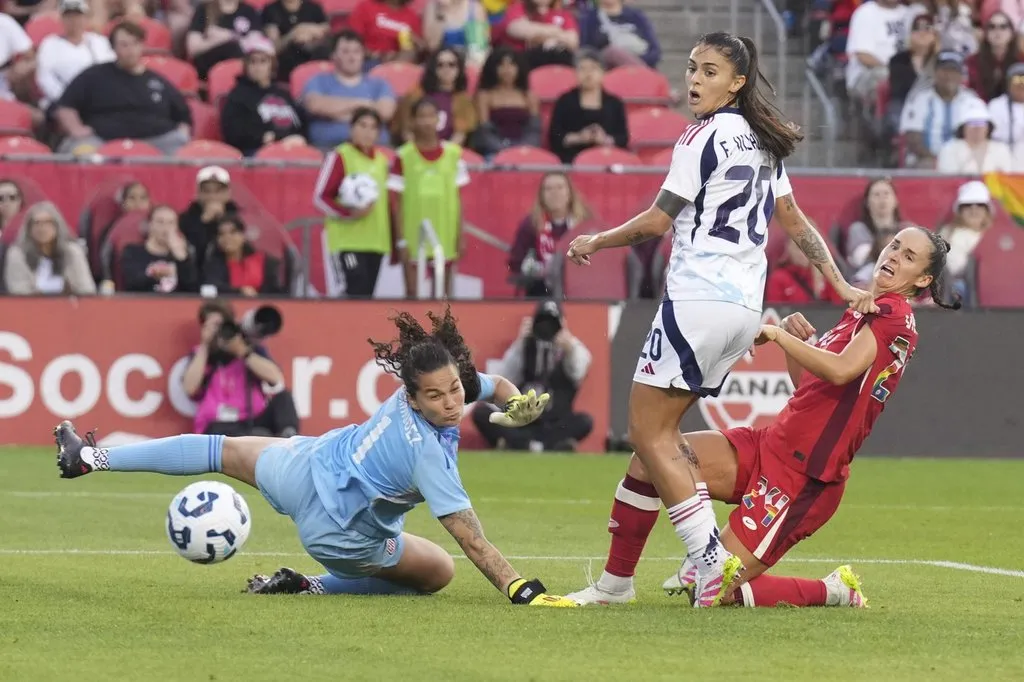
Late Surge Secures Victory for Canadian Women’s National Team In an exciting international women’s soccer friendly held on Friday, the Canadian women’s national soccer team showcased grit and resilience as they overturned a one-goal deficit to clinch a convincing 4-1 win against Costa Rica. The dramatic victory was powered by four late goals from Shelina Zadorsky, Holly Ward, Zara Chavoshi, and Emma Regan. The match, which seemed to be slipping away from the hosts in the first half, turned into a dominant second-half performance, reaffirming Canada’s depth and strength in women’s football. First Half: Costa Rica Takes the Lead The opening half saw a strong and organized performance from Costa Rica. Their defensive structure held up well against Canada’s early attempts to press forward. Midway through the first half, Costa Rica stunned the home crowd by breaking the deadlock with a well-executed goal, putting the visitors ahead 1-0. Despite dominating possession, Canada struggled to convert chances and penetrate Costa Rica’s defense. The first half closed with Canada trailing and visibly frustrated by their inability to finish. Tactical Changes Spark a Comeback Head coach Bev Priestman made crucial adjustments at halftime, introducing fresh legs and slightly tweaking the attacking formation. The result was a much more fluid and aggressive Canadian side that began to stretch the Costa Rican defense. The team’s increased intensity paid off in the final 20 minutes of the match. It was clear that the Canadians had found their rhythm and were now executing their game plan with precision. Zadorsky Ignites the Canadian Charge The comeback began with Shelina Zadorsky stepping up in the 72nd minute to net the equalizer. Her powerful header from a corner kick gave Canadian fans something to cheer about and shifted the momentum decisively in Canada’s favor. Zadorsky’s goal was more than just an equalizer—it was the spark that ignited a late-game onslaught. With energy levels surging, the Canadian side turned up the pressure. Ward and Chavoshi Deliver Stunning Goals Just a few minutes after Zadorsky’s goal, Holly Ward put Canada ahead with a beautiful finish from just outside the box. Her strike in the 76th minute found the top corner, leaving the Costa Rican goalkeeper with no chance. It was Ward’s first goal for the senior national team, making it a memorable moment for the young midfielder. The Canadian dominance continued, and in the 83rd minute, Zara Chavoshi, another rising star, added her name to the scoresheet. Chavoshi capitalized on a defensive lapse by Costa Rica, calmly slotting the ball into the net to extend Canada’s lead to 3-1. Regan Caps Off the Victory With Costa Rica reeling and the clock winding down, Emma Regan sealed the win with a brilliant individual effort in the 89th minute. Beating two defenders with a clever turn and burst of speed, she finished clinically to make it 4-1. The final goal was a testament to Canada’s attacking flair and depth of talent. A Statement Performance Though it was a friendly match, the performance carried significant weight for Team Canada. The resilience displayed in overcoming a deficit, along with the emergence of young talent, highlighted the bright future of the national program. Head coach Bev Priestman praised her team after the match, saying, “We showed character, depth, and a hunger to win. These are exactly the kind of performances we need heading into future international competitions.” Emerging Stars Make Their Mark The game was particularly noteworthy for the contributions of younger players. Holly Ward, Zara Chavoshi, and Emma Regan are not yet household names but played with maturity and confidence. Their goals and performances are sure to earn them more attention as Canada prepares for major tournaments. The friendly also served as a chance to test squad depth. Several substitutions and tactical changes allowed new players to gain valuable international experience while giving coaches more options to consider for future matches. Looking Ahead: Building Toward Bigger Goals Canada’s women’s soccer team is using these friendlies as part of their preparation for upcoming competitions, including the 2025 CONCACAF W Championship and the next FIFA Women’s World Cup cycle. Friday’s match offered a glimpse of how the team is evolving. With senior players like Christine Sinclair having recently retired, the onus is on the next generation to step up. The late-game heroics in this friendly show that the transition is already well underway—and it’s looking promising. Fans Applaud the Comeback Despite being a non-competitive fixture, fans turned out in good numbers and were rewarded with a thrilling comeback. The atmosphere in the stadium shifted dramatically after the equalizer, with Canadian supporters cheering every pass, tackle, and goal with passion. The friendly ended with a standing ovation for the home team, celebrating not just the win but the exciting brand of football on display.
Al Hilal Make History: Saudi Giants Reach Club World Cup Knockout Stage for the First Time

Al Hilal Football Club have written a new chapter in their storied history by reaching the knockout stage of the FIFA Club World Cup for the very first time. The Saudi Arabian powerhouse secured their place in the Round of 16 after a commanding 2-0 victory over Mexico’s Pachuca at Geodis Park on Thursday. This milestone achievement also marked the first win under the guidance of new head coach Simone Inzaghi. Historic Qualification Secured in Group H Placed in Group H alongside European champions Real Madrid, Austria’s Red Bull Salzburg, and Mexican side Pachuca, Al Hilal were considered underdogs in a challenging group. However, their resilience and tactical discipline allowed them to emerge as group runners-up, finishing behind Real Madrid but ahead of both Salzburg and Pachuca. Their campaign began with a hard-fought 1-1 draw against Real Madrid, where Al Hilal impressed fans and analysts alike by holding one of the tournament favorites to a draw. In their second match, the Saudi side battled Austria’s Salzburg to a goalless stalemate, maintaining defensive solidity while struggling to find the finishing touch in attack. It was in their final group stage encounter that Al Hilal truly came alive, defeating Pachuca 2-0 to collect the decisive three points. The result not only secured second place in the group but also ensured a historic progression to the Round of 16 — a first in the club’s Club World Cup history. Simone Inzaghi’s Impact Already Felt The match against Pachuca was not just a milestone for the club but also for head coach Simone Inzaghi, who registered his first win since taking charge on June 5, 2025. The former Inter Milan manager was brought in with the vision of elevating Al Hilal’s competitiveness on the international stage, and early signs suggest he’s on the right track. Under Inzaghi, Al Hilal have adopted a more tactically flexible system, blending the attacking flair that has defined their domestic dominance with a structured defensive approach. His emphasis on balance and game management was evident throughout the group stage, particularly in the way the team contained high-caliber opponents like Real Madrid and Salzburg. Key Performers Shine on the Big Stage Several Al Hilal players delivered standout performances during the group stage. The match against Pachuca saw striker Odion Ighalo and midfield maestro Ruben Neves rise to the occasion. Ighalo opened the scoring in the first half with a clinical finish inside the box, while Neves doubled the lead with a spectacular long-range effort just after the hour mark. In defense, Kalidou Koulibaly and Yassine Bounou anchored the backline with composure and leadership. Bounou, the Moroccan international goalkeeper, was particularly crucial in preserving the clean sheet against Salzburg and Pachuca. Tactical Discipline and Defensive Solidity One of the hallmarks of Al Hilal’s performance in the group stage was their exceptional defensive organization. Conceding only one goal in three matches against top-tier opposition is a testament to the team’s structure and preparation. Simone Inzaghi has clearly emphasized the importance of minimizing errors and capitalizing on counter-attacks. Al Hilal often sat deep, absorbed pressure, and relied on rapid transitions to exploit spaces behind opposing defenses. This shift in tactical focus is a departure from the more open, high-scoring style seen under previous coaches. The new approach may not be as flamboyant, but it has certainly proved effective on the world stage. Looking Ahead: Knockout Challenge Awaits With their place in the Round of 16 now secured, Al Hilal must prepare for even tougher opposition. The knockout stages of the FIFA Club World Cup are known for their intensity, and Inzaghi will need to draw on all his managerial experience to guide the team further. Their next opponent will be revealed following the conclusion of the group stage fixtures, but regardless of who they face, Al Hilal will approach the match with renewed confidence and ambition. Having made history, the Saudi giants now have a genuine opportunity to push for an even deeper run in the tournament.
10 Forwards the Sacramento Kings Could Target via Trade or NBA Free Agency
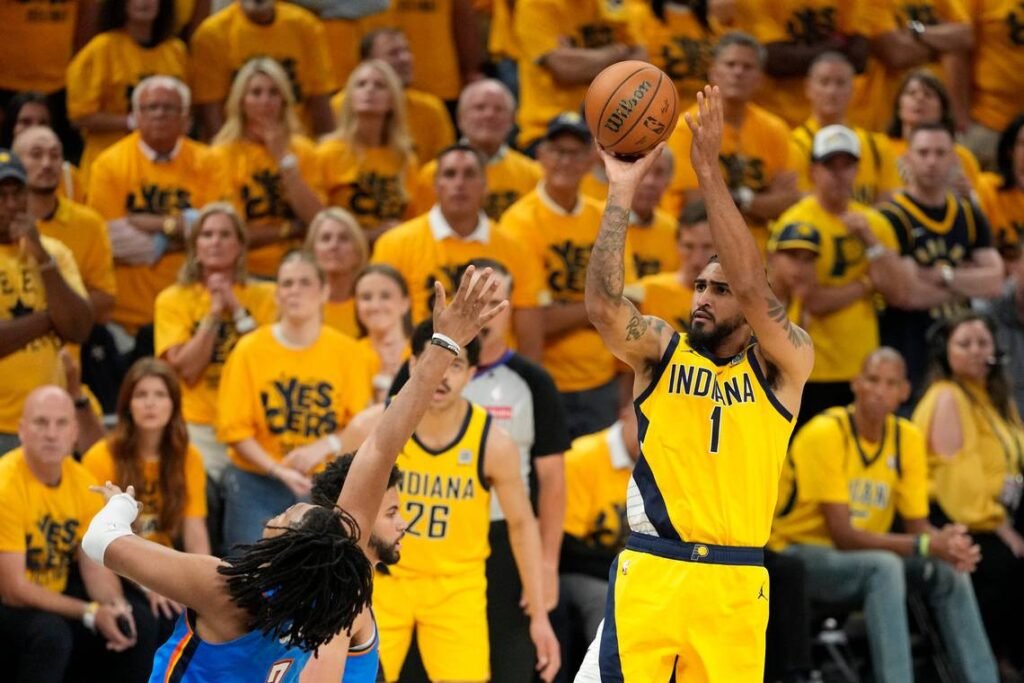
As the 2025 NBA offseason approaches, the Sacramento Kings are poised to reshape their frontcourt in a bid to become more competitive in the Western Conference. With General Manager Scott Perry leading the charge, the focus will be on acquiring size, athleticism, and defensive versatility—key elements that the current roster lacks in the forward and center spots. A Roster Needing Frontcourt Reinforcement The Kings have built a solid foundation around All-Star guard De’Aaron Fox and promising young forward Keegan Murray. However, to elevate their standing in the playoffs and become true contenders, Sacramento needs to address one critical weakness—frontcourt depth and size. The current roster lacks a true defensive anchor at the four or five who can complement Domantas Sabonis while also providing shot-blocking and rim protection. Additionally, by moving Keegan Murray back to his more natural position at small forward, the Kings could improve both their offensive spacing and perimeter length. Offseason Goals: Size, Defense, and Versatility Sacramento’s offseason strategy will be built around three key priorities: Add Length and Athleticism in the Frontcourt: The Kings need versatile forwards who can guard multiple positions and provide weakside help defense. Rebalance the Rotation: Shifting Murray to small forward means targeting hybrid bigs who can stretch the floor and protect the rim. Explore All Avenues: Perry is expected to explore every possible path—through the draft, trades, and the free agent market—to land the right pieces. Let’s take a look at 10 forwards the Kings could pursue this summer. 1. John Collins (Utah Jazz – Trade Target) Collins remains a potential trade target as the Jazz look to shift direction. He offers floor spacing, rebounding, and size at the power forward position. A change of scenery could unlock his full potential. 2. Tobias Harris (Unrestricted Free Agent) Harris may not come cheap, but his experience, scoring ability, and size at 6’8” make him a valuable asset. If the Kings want a plug-and-play forward who can contribute on both ends, Harris is a proven option. 3. Pascal Siakam (Unrestricted Free Agent) While it’s a long shot, Siakam’s elite two-way play, championship experience, and fit alongside Sabonis and Fox would make Sacramento a top-tier team. He can score, rebound, and defend at a high level. 4. Kyle Kuzma (Washington Wizards – Trade Target) The Wizards are in a rebuilding phase, and Kuzma could be available for the right price. He brings scoring, rebounding, and playoff experience—and he thrives in a fast-paced offense like Sacramento’s. 5. Obi Toppin (Restricted Free Agent) Toppin made significant strides in Indiana and could bring high-flying energy and athleticism to Sacramento. As a restricted free agent, the Kings would need to negotiate carefully, but his skillset fits their needs.
